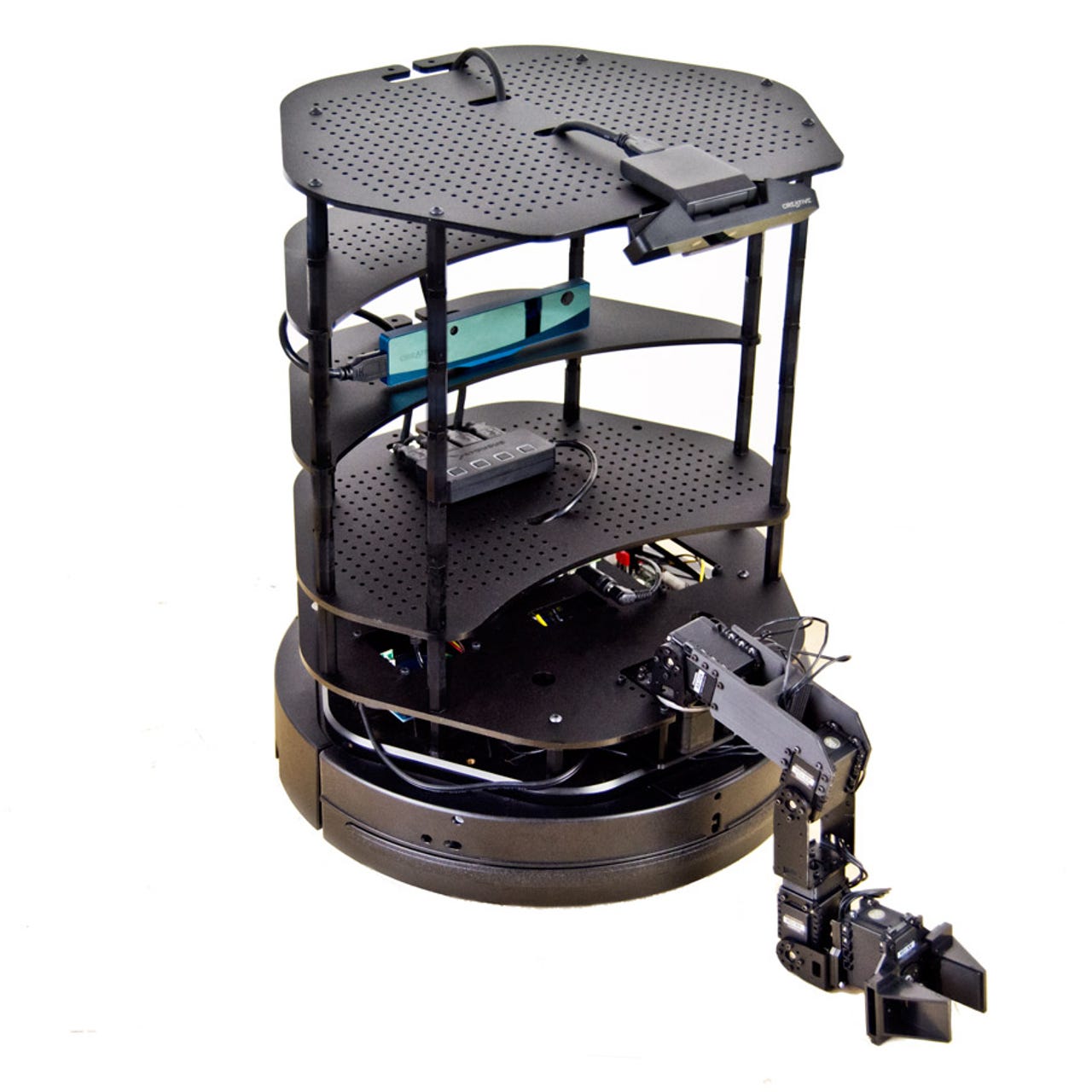Happy birthday ROS: A decade of open-source robotics

2007
It all started ten years ago. ROS grew out of several early open-source robotic software frameworks, including switchyard by the Stanford Artificial Intelligence Laboratory.
The same year, legendary research lab and technology incubator Willow Garage hired its first employees: Jonathan Stark, Melonee Wise, Curt Meyers, and John Hsu. You can point to a lot of seminal moments in robotics history, but this is a top contender for the year modern robotics was born.
2008
ROS was developed primarily by Eric Berger and Keenan Wyrobek, the founders of the Stanford Personal Robotics Program, who started the Personal Robotics Program at Willow Garage in 2008.
Adopting a federated development model, Willow Garage collaborated with researchers at more than 20 universities and institutions.
Pictured is "Marvin," the first autonomous car to use ROS. It was developed by researchers at the University of Texas, Austin, and presented in 2010.
2009
For the first couple years, everything occurred behind the scenes. ROS was the effort of a small band of dedicated roboticists who envisioned an open-source future for robots.
But in 2009, ROS was ready for its public debut. It came in the form of a now-legendary paper called "ROS: an open-source Robot Operating System."
Above, the first Lego Mindstorms using ROS in 2010.
2010
2010 saw the release of ROS 1.0. It was also the year that ROS moved out of the research lab and into the marketplace.
Pictured is a robot vacuum from California-based Neato Robotics, which released the first home appliance to run on ROS in 2010.

2011
If you look around today, you'll notice that a lot of robots are built as task-agnostic platforms. You can trace the origins of that idea to Turtlebot.
Sure, it looks crude. But this low-cost personal robot kit, which was created at Willow Garage by Melonee Wise and Tully Foote, gave robotics engineers a mobile platform they could rig with an endless number of sensor payloads and end-effectors.
Even a few years earlier, designing a robot meant starting from scratch. Thanks to Turtlebot, developers could start with a solid platform and build out from there.
Naturally, ROS is the turtle's mother tongue.
2012
In 2012, ROS was running on every continent (yeah ... Antarctica). The same year, Willow Garage spun out the Open Source Robotics Foundation, which provided stewardship for ROS. The Open Source Robotics Foundation has since changed its name to Open Robotics.
2012 (p.2)
Also in 2012, Rethink Robotics released the first commercial robot based on ROS.
Say "hi," Baxter.
2014
ROSCon 2014 took place in Chicago. The event marked an important milestone: For the first time, industry attendees outnumbered academic attendees. ROS was officially the future of commercial robotics.
Oh yeah, and ROS went to space. Pictured is Robonaut 2 aboard the International Space Station.
2015
2015 saw the DARPA Robotics Challenge, a competition that pitted robotics teams from some of the top robotics research institutions and companies around the world in a disaster-inspired obstacle course challenge.
Out of the 23 DRC finalists, 18 used ROS and 14 used Gazebo, an open-source robotic simulator developed under the guidance of the Open Source Robotics Foundation (now Open Robotics).
2017
Today there are hundreds of robots running ROS, which is in its 11th distribution and has more than 2,800 authors listed in the public GitHub registry.
ROS Answers contains 36,000+ questions, and top commercial robotics companies like Fetch Robotics develop robots that run ROS.
There's little question that the future of robotics is open-source. Happy birthday, ROS. Here's to the next ten years of awesome robots!